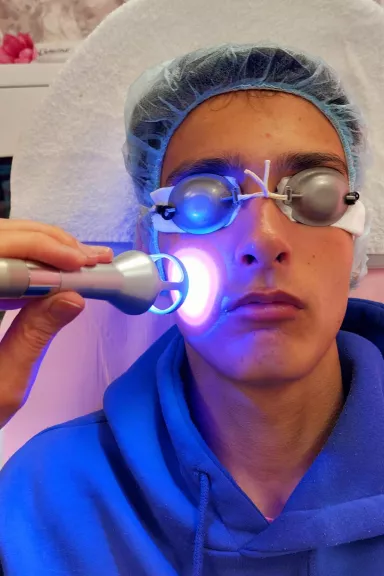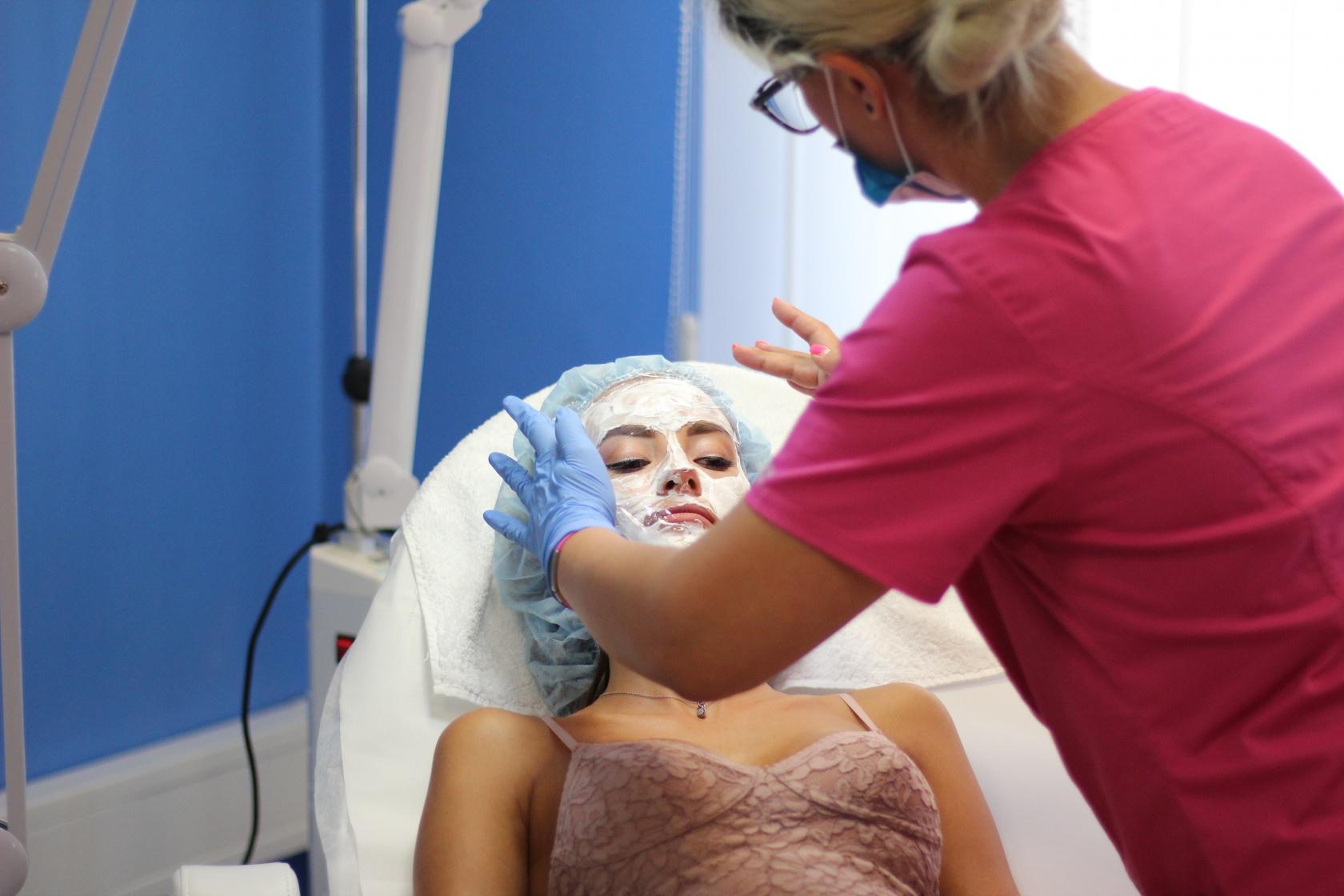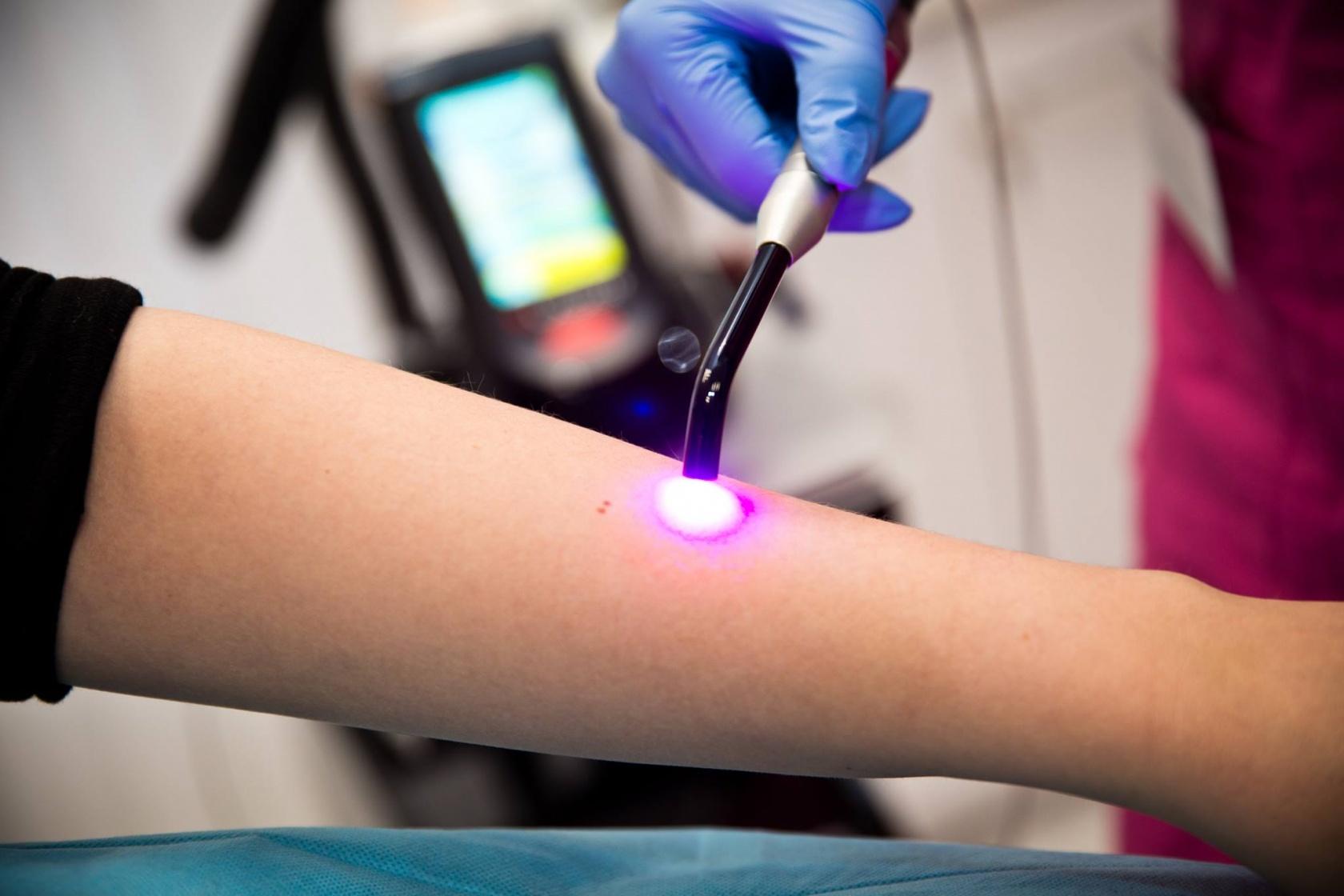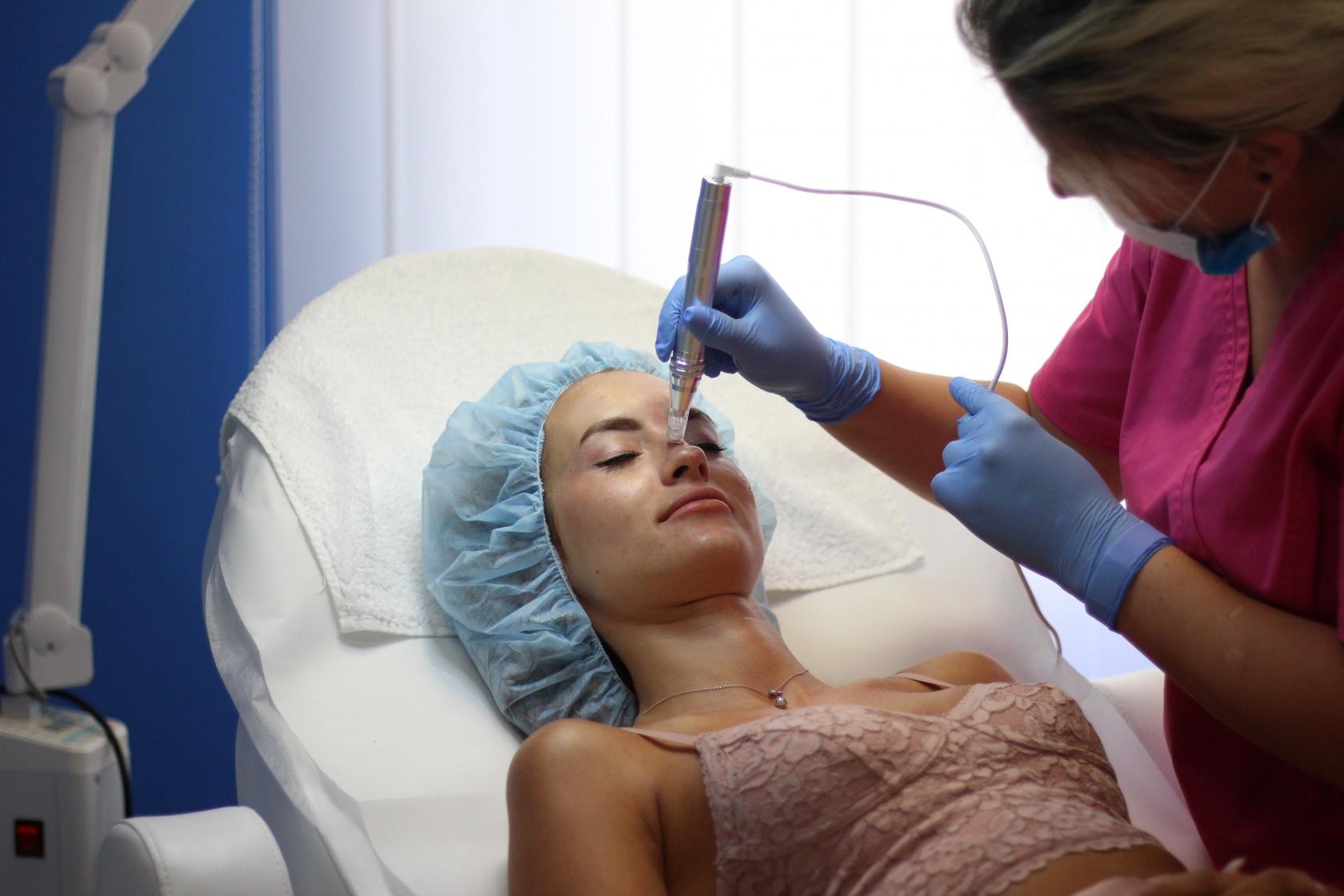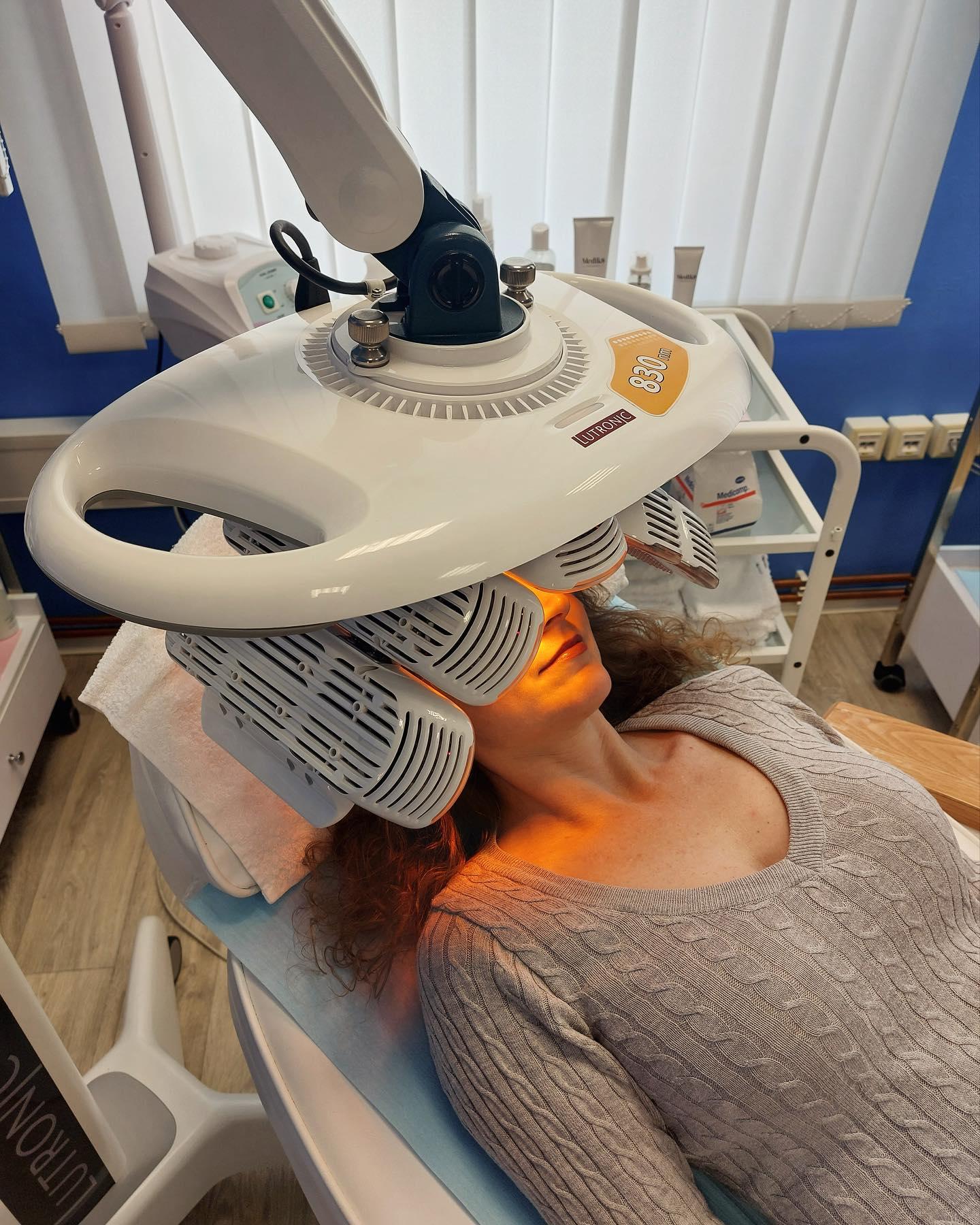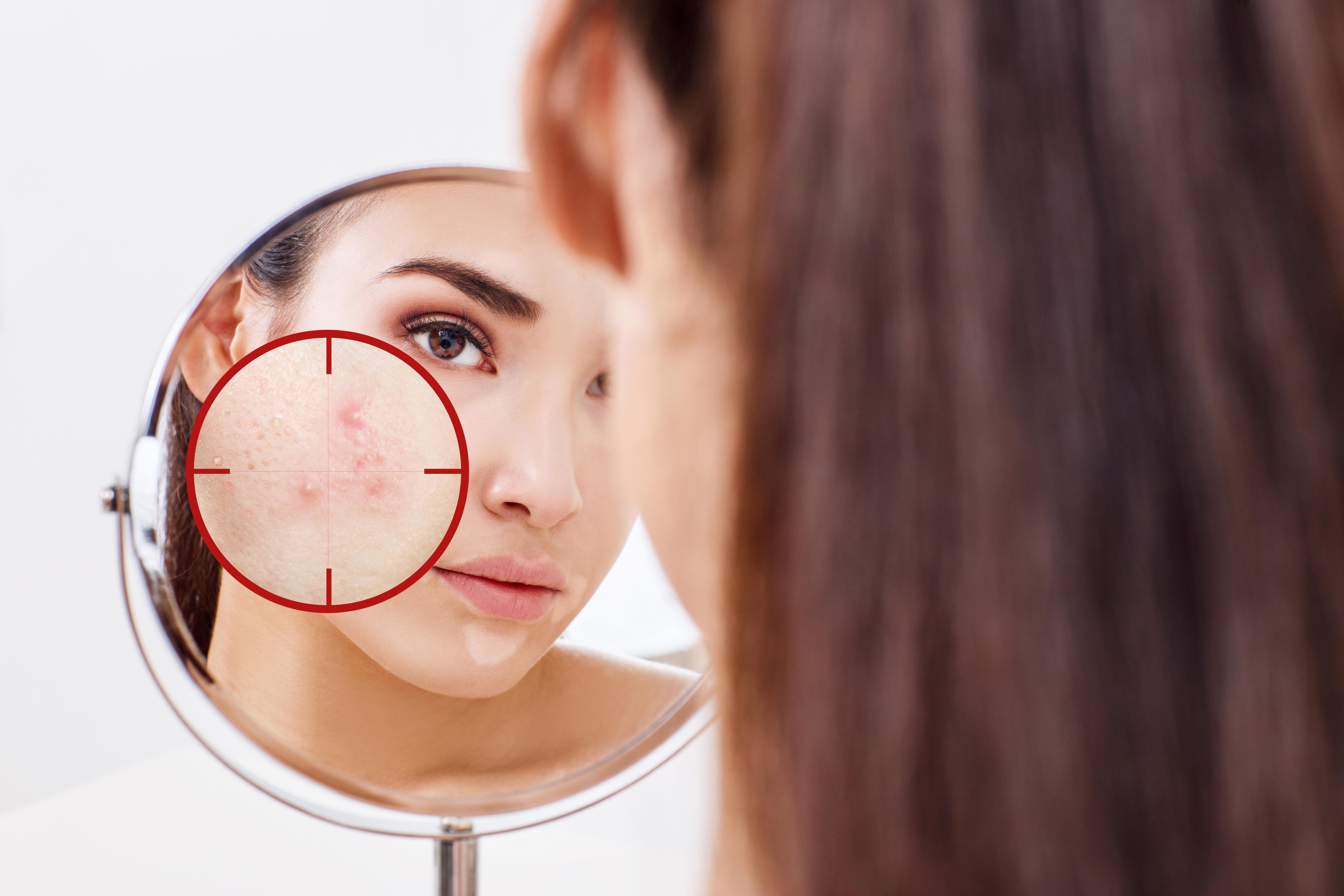
Acne is not just a cosmetic problem that bothers you every time you look in the mirror or makes you anxious when you go out without makeup. Acne and its treatment rank among the most common skin conditions overall. The reasons for its widespread occurrence are influenced by many factors. What really helps with acne – and how can you get rid of it?
How does acne treatment work?
Acne treatment is always completely individual – it depends on the skin type, the extent of the problem, and its underlying causes. At our clinic, we offer a comprehensive approach that combines dermatological care with modern aesthetic methods.
Treatment plans most often include laser therapy, chemical peels, phototherapy, microneedling, and more. But that’s not where it ends. Our experienced specialists will gladly guide you through a truly holistic approach, including possible lifestyle adjustments.
The duration of therapy varies – the first improvements are usually visible after a few weeks, while chronic forms require longer and consistent care.
Since acne is influenced by many factors (hormones, lifestyle, skincare), the most effective treatment plan is always the result of a personal consultation with a specialist, who will recommend the optimal combination of methods specifically for your skin.
Price list
| Acne consultation + personalized treatment plan | 1.300 Kč |
Inquiry / Non-binding appointment request
More about acne
When we talk about acne, we mean an inflammatory disease of the sebaceous gland and hair follicle, medically referred to as the pilosebaceous unit. Sebaceous glands play an important role in keeping the skin moisturized. Problems arise when they begin to produce too much sebum and become inflamed, which then manifests as the acne we all know so well.
Acne is typical during puberty, but it can also affect small children and adults. The biggest issue occurs when acne treatment is postponed. Many parents of teenagers believe it’s normal and that the pimples will disappear over time. As a result, patients often see a dermatologist too late, when treatment becomes more difficult. Remember – any form of acne is a sign that something in the body isn’t functioning properly. That’s why it’s important to address the problem, regardless of age or gender. Acne treatment should begin as soon as the first symptoms appear, such as blackheads and whiteheads – also known as open and closed comedones.
These are areas of the body with the highest concentration of sebaceous glands. On the face, this is mainly the forehead, nose, and chin — the so-called T-zone. Women know well that these areas require the most attention when maintaining daily makeup, and the sebaceous glands are to blame.
The development of acne is linked to increased production of sebum and a change in its consistency – a condition known as dysseborrhea. When sebum production increases and the sebum becomes thicker, it has difficulty exiting the pore, leading to blockage of the hair follicle. This blockage occurs not only due to excess sebum but also because of dead skin cells. Such a closed environment creates ideal conditions for bacterial growth, which leads to inflammation and the formation of acne.
Acne treatment is based on reducing sebum production, accelerating cell renewal, and eliminating bacterial infection and inflammation. Properly chosen dermocosmetics can be an excellent complement to acne therapy.
One of the most common mistakes in acne treatment is using products that are too drying or aggressive. While it’s good to “dry out” acne, it shouldn’t be taken literally. As mentioned earlier, sebum exists to keep the skin hydrated. If the skin becomes excessively dry from harsh products, sebum production actually increases — the exact opposite of what you want to achieve.
The very first step is regular skin cleansing. With proper cleansing, you can remove visible blackheads and whiteheads, thus preventing the formation of inflamed pimples. It’s highly recommended to undergo professional facial cleansing at least once a month, but don’t forget about daily cleansing in the morning and evening.
“One of the basic mistakes in acne treatment is using products that are too drying and aggressive. It’s good to ‘dry out’ acne, but not literally.”
Improper pimple squeezing is highly inappropriate. If done incorrectly, you can easily push the sebum deeper into the skin. Even if you think you’ve cleared it, it might not be true — and the healing process could take twice as long. Moreover, squeezing releases bacteria and sebum trapped inside the pore, leading to inflammation of the surrounding tissue, which again prolongs healing.
Because acne often causes lower self-esteem and feelings of insecurity, many patients try to conceal it rather than treat it. They often turn to heavy makeup, which makes the condition worse by clogging the pores even more. If you wish to cover imperfections, rashes, or inflamed spots, opt for lighter, breathable concealing products containing active ingredients. These not only help cover what’s needed but also support acne treatment.
Since acne should always be managed by a dermatologist, you shouldn’t postpone your visit. Only a medical professional can prescribe treatment targeted to your specific condition. Topical therapies most often include products containing retinoids (adapalene, isotretinoin, tretinoin), azelaic acid, or benzoyl peroxide. They work best when applied to clean, dry skin. The first visible results usually appear after 4–6 weeks. It’s important to be patient and not interrupt treatment. A temporary side effect of such therapy can be increased irritation or dryness, which can be alleviated by using a non-comedogenic moisturizer.
For most types of acne, topical treatment is sufficient. However, in more severe cases, systemic therapy with antibiotics may be required. Tablets are not suitable for pregnant women or for patients with liver or kidney disease. The most effective options include tetracycline antibiotics and retinoids such as isotretinoin.
Some women with elevated levels of male hormones may also be prescribed hormonal contraceptives, which help regulate this imbalance.
The duration of antibiotic or hormonal therapy varies, most commonly lasting from 3 to 12 months.
